The planet is undergoing drastic change with regards to the climate. The ice caps are melting, hurricanes and storms are becoming more intense, various locations are experiencing greater flooding, wildfires are a more frequent occurrence, extreme droughts are eliminating whole water sources—the list goes on and on.
Now, many organizations and institutions are keeping an eye on what’s going on in the world climate-wise, and NASA is one of the biggest players out there. Over the years, NASA has been watching over thousands of locations around the globe using its space tech, looking for signs of global climate change.
For this purpose, it launched the Images Of Change website where it documents the before-and-afters of various places on Earth, highlighting melting glaciers, results of wildfires, deforestation, extreme droughts, and a number of other phenomena.
Bored Panda has collected some of the most prominent changes recorded over the years and decades, which you can see, read about, comment, and vote on below.
Arctic Sea-Ice Coverage Hits Record Low
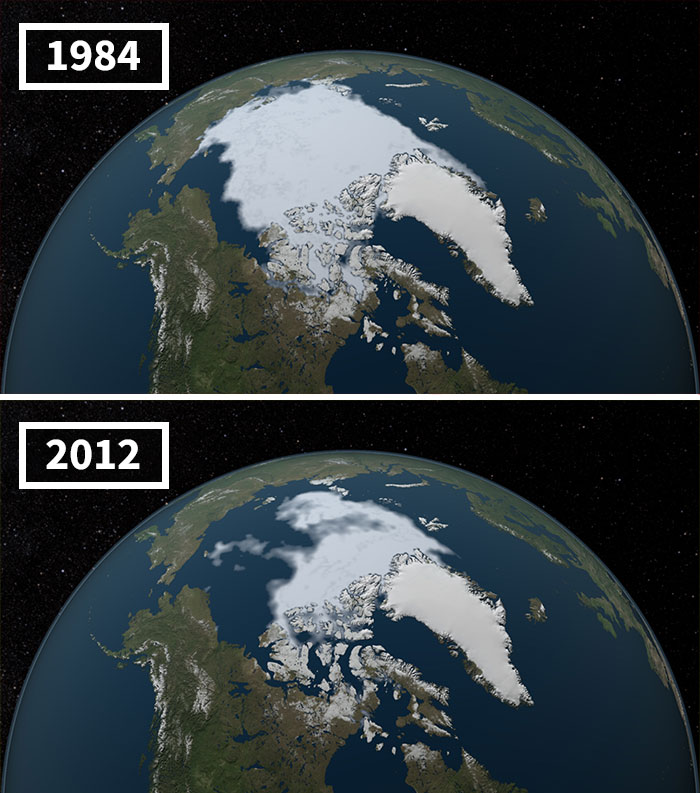
“The area of the Arctic Ocean covered in ice increases during the winter and then shrinks during the summer, usually reaching the year’s low point in September. The minimum coverage for 2012 set a record low since at least 1979, when the first reliable satellite measurements began. These images compare the 1984 minimum, which was roughly equal to the average minimum extent for 1979–2000, with that of 2012, when the minimum was about half that. The 2013 minimum was larger, but continued the long-term downward trend of about 12 percent sea-ice loss per decade since the late 1970s, a decline that accelerated after 2007. The 2016 minimum was tied for the second-lowest on record. “At the rate we’re observing this decline,” said NASA scientist Joey Comiso, ‘it’s very likely that the Arctic’s summer sea ice will completely disappear within this century.'”
Shrinking Aral Sea, Central Asia
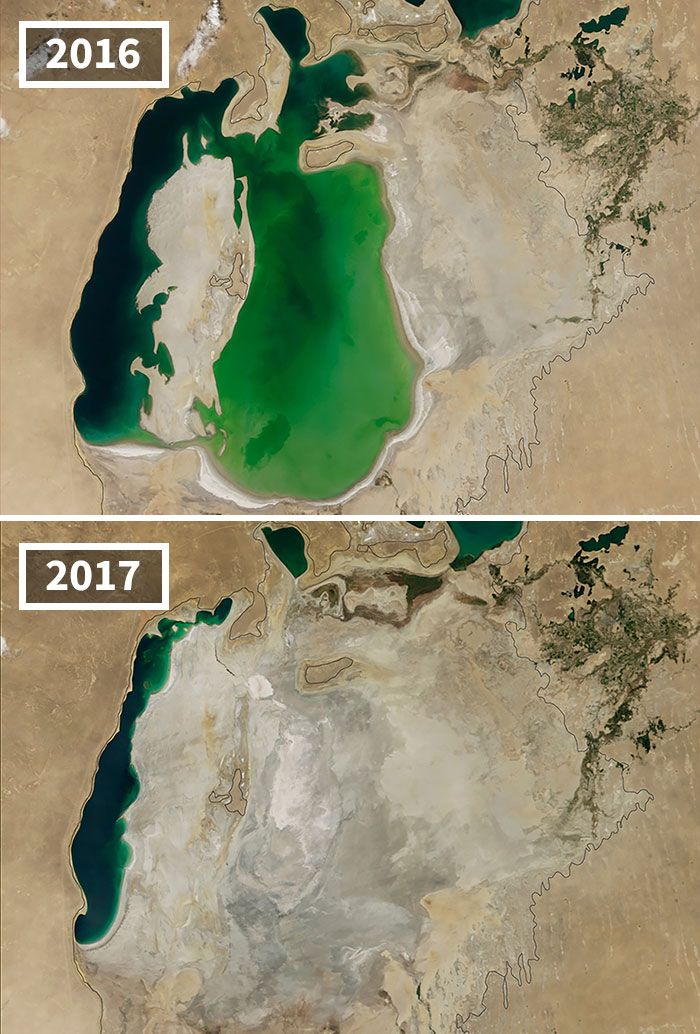
“The Aral Sea was the fourth largest lake in the world until the 1960s, when the Soviet Union diverted water from the rivers that fed the lake so cotton and other crops could be grown in the arid plains of Kazakhstan, Uzbekistan and Turkmenistan. The black outline shows the approximate coastline of the lake in 1960. By the time of the 2000 image, the Northern Aral Sea had separated from the Southern Aral Sea, which itself had split into eastern and western lobes. A dam built in 2005 helped the northern sea recover much of its water level at the expense of the southern sea. Dry conditions in 2014 caused the southern sea’s eastern lobe to dry up completely for the first time in modern times. The loss of the moderating influence of such a large body of water has made the region’s winters colder and summers hotter and drier.”
Muir Glacier Melt, Alaska
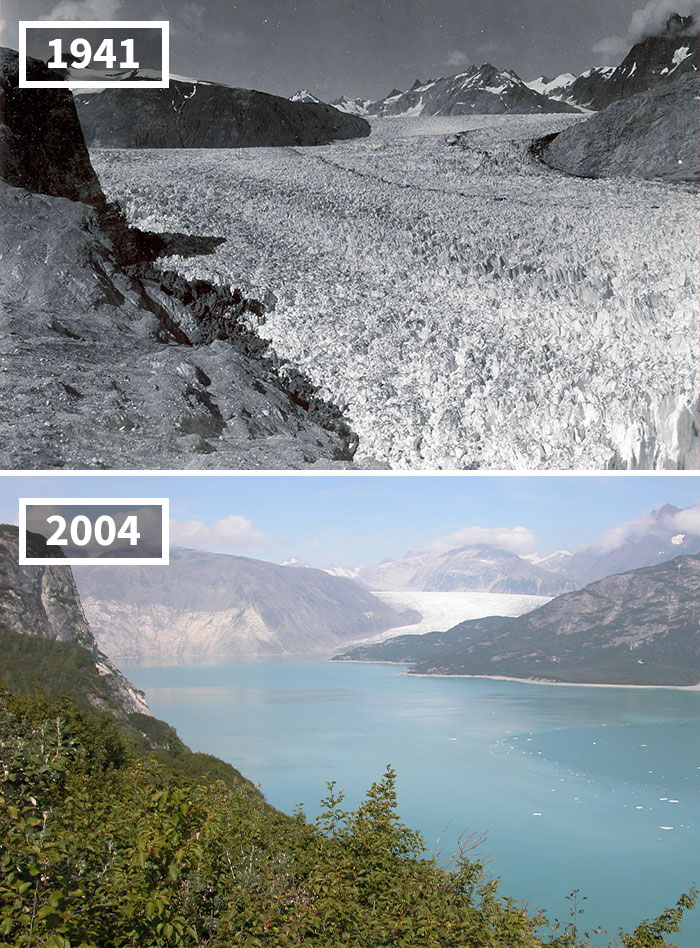
“The 1941 photograph shows the lower reaches of Muir Glacier and its tributary, Riggs Glacier. The two glaciers filled Muir Inlet. In the 2004 photograph, Muir Glacier, continuing a retreat nearly two centuries long, is located about 4 miles (7 kilometers) to the northwest, out of the field of view. Riggs Glacier has retreated some 0.4 miles (0.6 kilometers). Both glaciers have thinned substantially.”
Drought In Lake Powell, Arizona And Utah
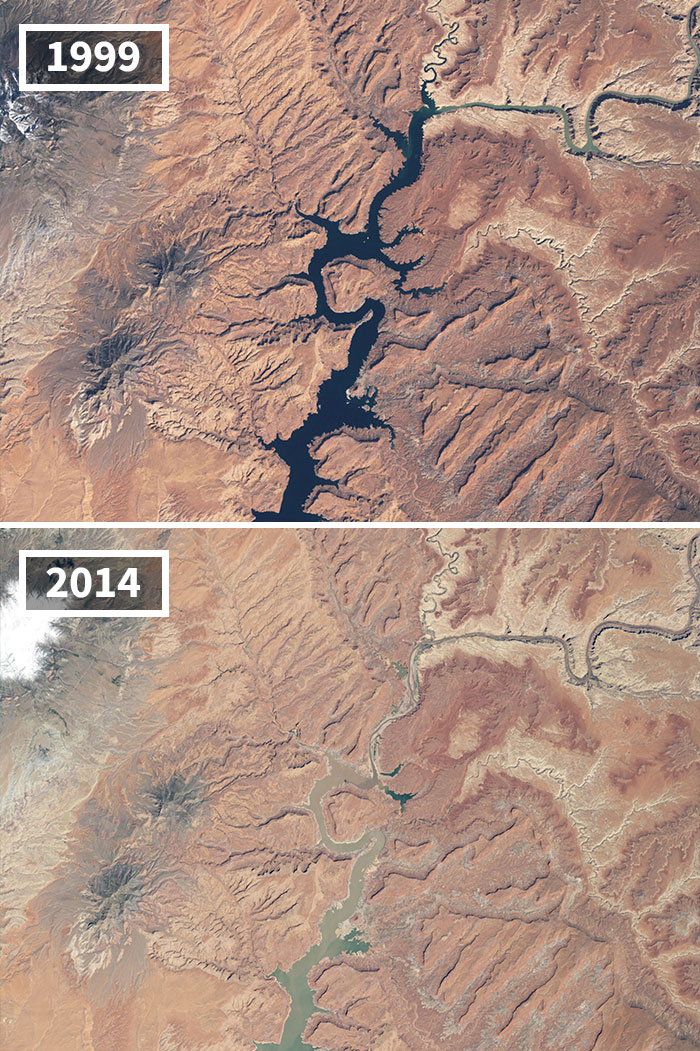
“Prolonged drought coupled with water withdrawals have caused a dramatic drop in Lake Powell’s water level. These images show the northern part of the lake, which is actually a deep, narrow, meandering reservoir that extends from Arizona upstream into southern Utah. The 1999 image shows water levels near full capacity. By May 2014, the lake had dropped to 42 percent of capacity.”
Rare Snow Falls At The Edge Of The Sahara Desert

“Snow fell on the edge of northwest Africa’s Sahara Desert in mid-December 2016, a rarity for the area. The Landsat 7 satellite’s Enhanced Thematic Mapper Plus (ETM+) sensor captured the left image of white over a caramel-colored landscape southwest of the Algerian community Ain Sefra, a town sometimes referred to as the gateway to the desert. All of the snow disappeared except at the highest elevations, as shown in the right image captured by Landsat 8. Ain Sefra’s last snowfall occurred in February 1979.”
Drying Lake Poopó, Bolivia

“Lake Poopó, Bolivia’s second-largest lake and an important fishing resource for local communities, has dried up once again because of drought and diversion of water sources for mining and agriculture. The last time it dried was in 1994, after which it took several years for water to return and even longer for ecosystems to recover. In wet times, the lake has spanned an area approaching 1,200 square miles (3,000 square kilometers). Its shallow depth—typically no more than 9 feet (3 meters)—makes it particularly vulnerable to fluctuations.”
Ice Avalanche In Tibet’s Aru Range
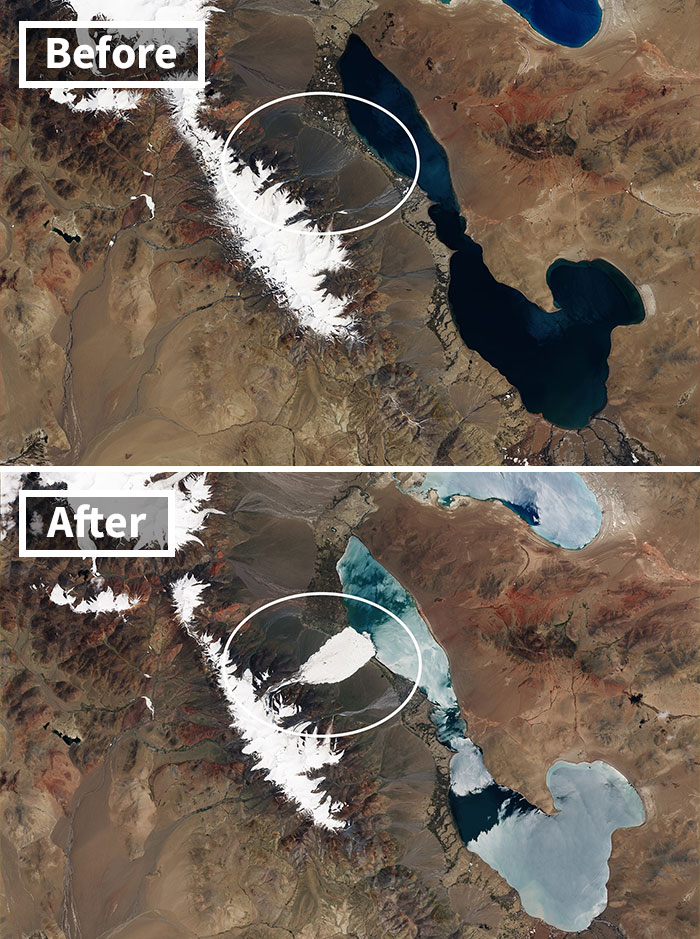
“The collapse of a glacier tongue on July 17, 2016, sent a huge stream of ice and rock tumbling down a narrow valley in Tibet’s Aru Range. Nine people in the remote village of Dungru were killed along with their herds of 350 sheep and 110 yaks. The ice avalanche, one of the largest ever recorded, left debris as much as 98 feet (30 meters) thick across 4 square miles (10 square kilometers). The reason for the collapse has so far eluded glaciologists.”
Iceland’s Ok Glacier Melts Away

“These images show the latter stages of the decline of Okjökull, a melting glacier atop Ok volcano in west-central Iceland. (“Jökull” is Icelandic for “glacier.”) A 1901 geological map estimated that Okjökull spanned about 15 square miles (38 square kilometers). In 1978, aerial photography showed the glacier had shrunk to about 1 square mile (3 square kilometers). Today, less than half a square mile (less than 1 square kilometer) remains.”


